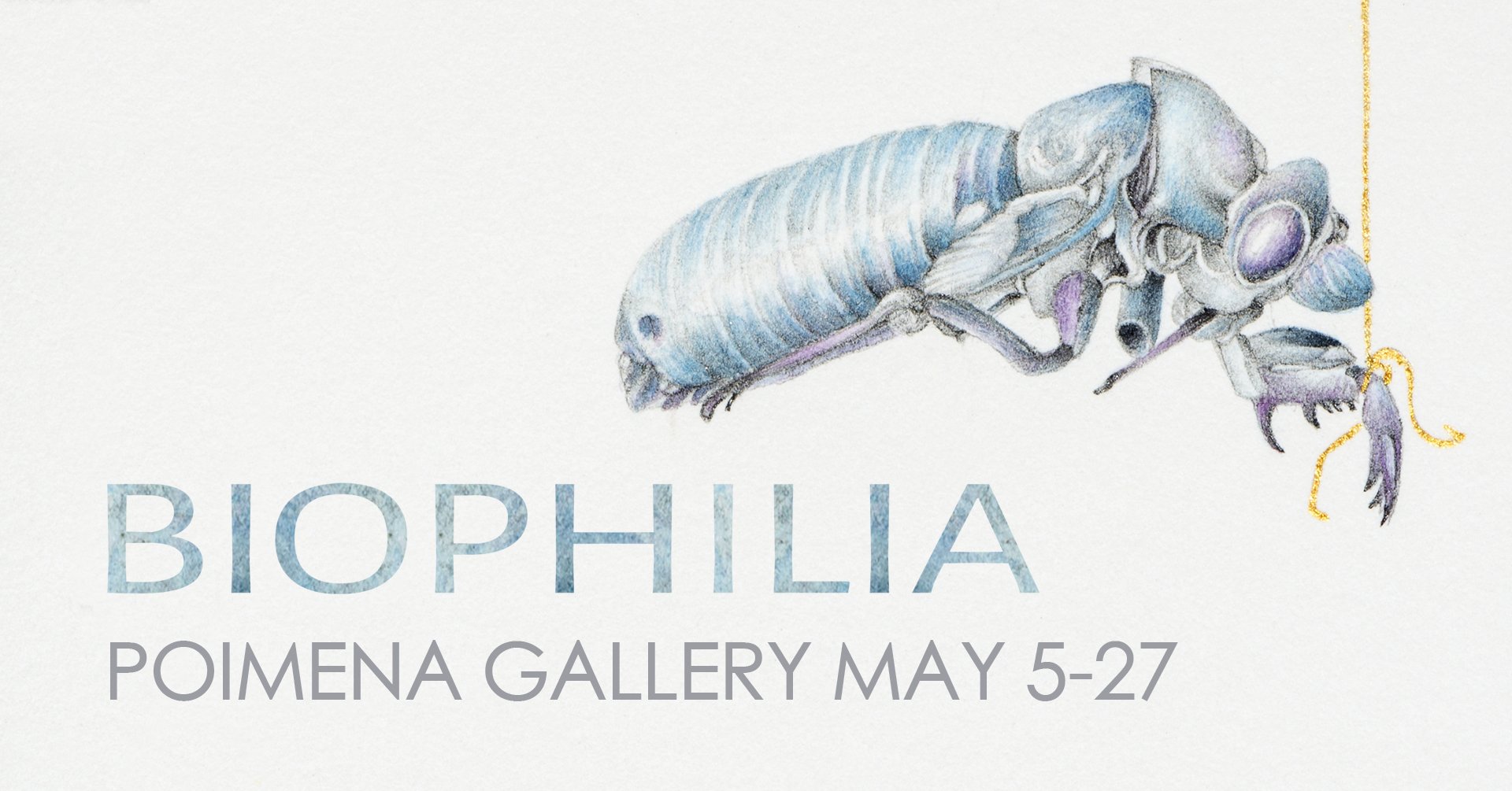
Biophilia
Exhibition Statement
Biophilia presents work from local and international artists with an interest in nurturing the appreciation and curiosity people have for nature, focusing on the fine details of organisms, landscapes and ecosystems to investigate biomorphism, hybridity, and reimagining living creatures. The works in this exhibition evoke a sense that all is not as well as it seems.
Biophilia is defined by Cambridge Online as the ‘inborn affinity human beings have for other forms of life’; the belief that humans have an innate love for the living earth. Yet undeniably the impact of humans on all living things can be seen across the landscape, locally and globally. What responses may nature have to the encroachments they experience? Acknowledging the current state of climate change, how do we encourage an appreciation for nature in a meaningful way?
Elizabeth Kolbert’s 2014 book, The Sixth Extinction: An Unnatural History discussed the potential mass extinctions of earth’s organisms; scientists across the globe are recording declines in habitat and numbers of organisms, specifically the invertebrates which are highly underrepresented on the International Union for the Conservation of Nature Red List. Artists have long documented what can be observed in nature. They are also uniquely positioned to create work at the intersection of art and natural science – and they can continue to help others reimagine nature’s future.
Through various mediums, artists capture their own reactions and perhaps, empathically, the response of the non-human to the humanized landscape. Rethinking what it is to cohabit with other living things, the landscapes and the smallest organisms, in 2022 Biophilia represents artists’ recordings of non-human life, real and reimagined, and their relationships to where they live, in an endeavour to recognize and honour the other forms of life with whom we cohabit.






